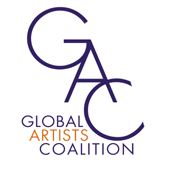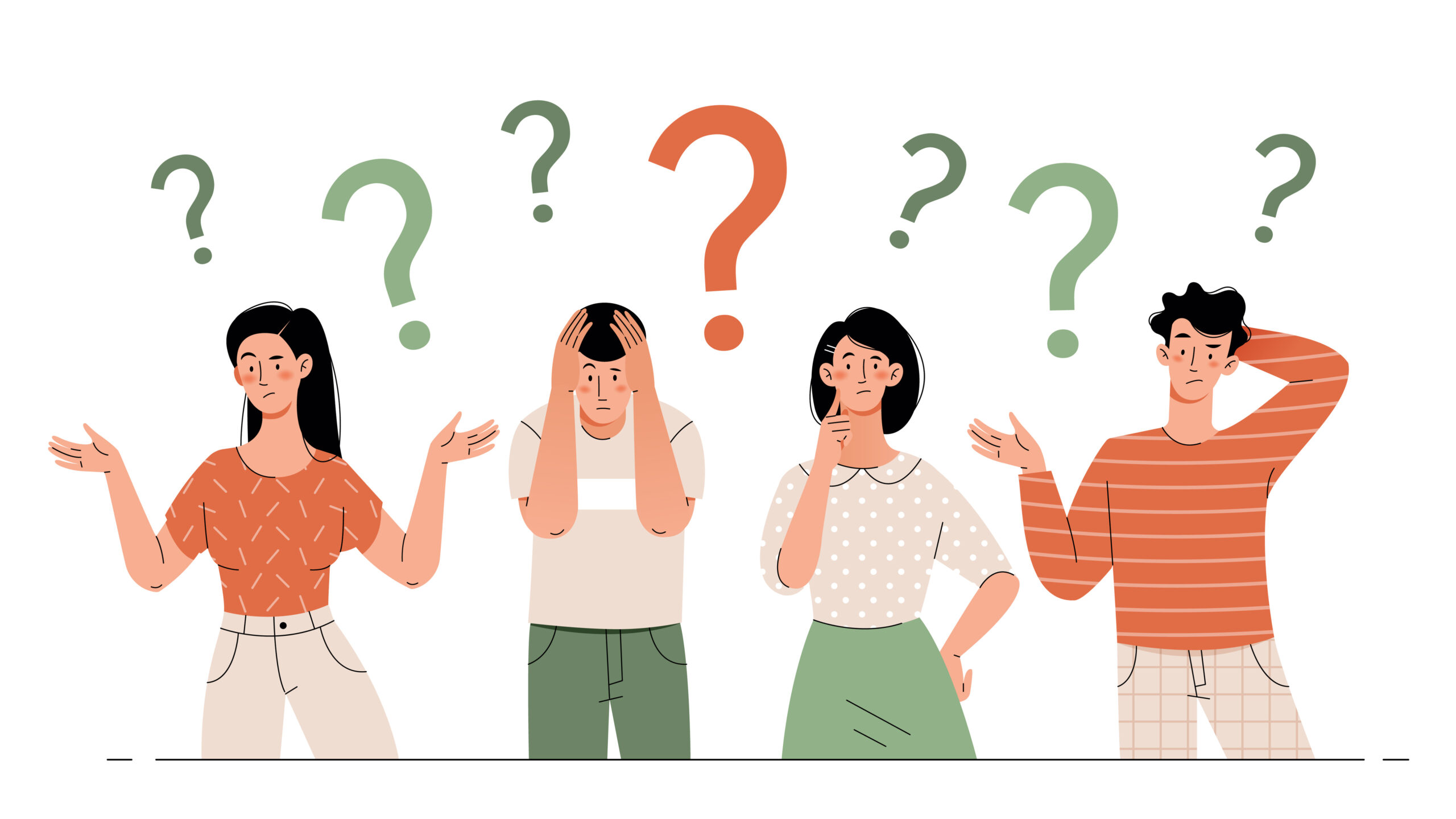The Hidden Power of Symbols
Did you know the wood from the holly tree was used by ancient Druids to make magic wands in the practice of witchcraft?
The entire world runs on symbols and not a minute goes by that we don’t experience a symbolic message with the potential to get under ones’ skin. A recurring dream, a surreptitious glance at a strangers tattoo, the icons on your computer, internet memes, brand logos, store signs, text message emoticons, you name it – there are symbols everywhere and in everything. There’s no escaping the world of symbols, all we can do is become more aware of their power and the controlling influence they have on behavior and motivation.
Here’s a list of sixteen powerful and inspirational symbols from the ancient and modern worlds, including those that enter dimensions not fully explained by science.
Many of these symbols transcend human meaning and lead us deep into the world of the sublime:
16) All Seeing Eye
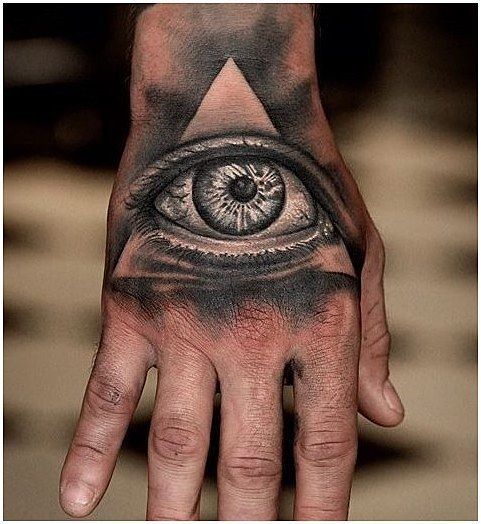
The Eye of Horus
The Eye of Horus, also known as wadjet, wedjat or udjat can be traced back to ancient Egypt and is recognized as a symbol of protection, royal power, and good health. The symbol also represents the biological third eye also known scientifically as the pineal gland located near the center of the human brain.
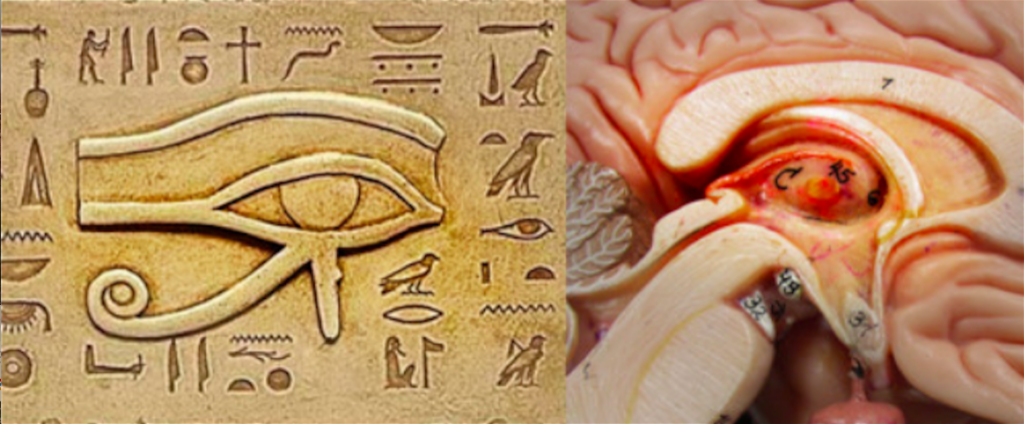
The third eye is a sacred symbol representing spiritual consciousness and the epicenter of enlightenment.
The pineal gland is believed to be a gateway to spiritual connection and heightened intuition. The word pineal comes from the Latin pinea meaning pine-cone. The pea-sized gland located at the center of the brain is known to science to regulate the bodies internal clock through the secretion of melatonin. It is called the third eye because it literally has the attributes of the human eye, including a cornea, retina and other sensitive nerve endings that typically respond to light.
It is a mystery to science as to why a gland with optical receptors would be placed where no light exists.
Ancient mystics believed the third eye lens could see beyond physical reality.
The Eye of Providence
The Eye of Providence represents the eye of God and the singular divine power that gave birth to the universe. The symbol is often reflected vis-à-vis a human eye enclosed in a triangle or surrounded by clouds or bursts of light. In Christianity, the triangle represents the Holy Trinity and the benevolent entity that watches over humanity, providing divine guidance.
 The Eye of Providence is also an important Freemasonry symbol that is often presented with a semi-circular glory under the eye, and that is sometimes presented enclosed in a triangle. The Freemasons refer to the all-powerful God as the ‘Grand Architect of the Universe’ and the symbol that reminds every Mason to be mindful of their thoughts and deeds as they are being observed by God at all times.
The Eye of Providence is also an important Freemasonry symbol that is often presented with a semi-circular glory under the eye, and that is sometimes presented enclosed in a triangle. The Freemasons refer to the all-powerful God as the ‘Grand Architect of the Universe’ and the symbol that reminds every Mason to be mindful of their thoughts and deeds as they are being observed by God at all times.

In 1782, the Eye of Providence was added to the reverse side of the Great Seal of the United States. On the approved version, the Eye floats above an unfinished pyramid of thirteen steps, symbolizing the original colonies of the new nation.
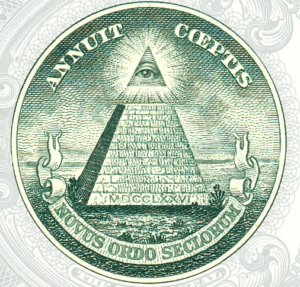
Many of the Founding Fathers of America were Freemasons and are believed to have hidden many esoteric meanings in plain sight, including symbols of control, motivation and elements modern civilization we find it hard to live without like currency.
The Freemasons and other secret societies view the mind as a powerful tool with the capability to unlock the underlying meanings behind all things in the material world – to obtain mastery over it. To understand the development of civilization and its structure, you need only to travel back to ancient Sumeria and the system preserved in the first form of writing called cuneiform text.
The ancient Sumerians are considered the creators of modern civilization, reported to have received their ancient wisdom from the mystical gods they called the Annunaki.
The Sumerians were the first to use pictures for words.

The Shepherds ruled over the sheep, by taking control of the farms, churches, temples and kingdom.
It is no secret that what we call today: the economy, religion and government – and “the fourth estate” of news media – have near complete control over our behaviors, motivations and beliefs. If you don’t think this is true, try living in a city without money for two weeks.
In 1951, the CBS Eye logo made its debut on television airwaves. Creative director Bill Golden found his inspiration while driving through Pennsylvania Dutch country, intrigued by hex symbols that were drawn on Shaker barns to ward off evil spirits.
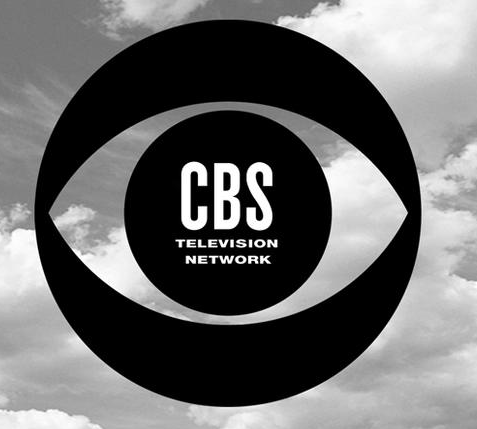

The eye symbolizes The Almighty keeping watch over His creation.
Symbols are also the language of the subconscious mind – and though not fully understood they are believed to act as a set of instructions that put the subconscious mind to work. When mere words fail us, we fall back on signs and symbols that convey personal meaning, an underlying message that was either taught to us by someone else or through our own personal experience.
The most commonly known use of symbology was proposed by renown psychoanalyst, Sigmund Freud, and his methods of dream analysis. Freud called dreams, “the royal road to the subconscious”, and felt their biggest function was to reveal to us our underlying wishes.
The Swiss psychotherapist, Carl Jung, who also knew Freud, developed his use of symbology but from a different direction. Jung did not agree with Freud’s structure of the unconscious but he did believe in psychic symbols. Jung devised the concept of archetypes, images and the concept of universal meaning derived from the shared past of humanity, or what he called collective unconscious. Jung believed certain universal memories and images were shared as a part of our collective evolution.
For Jung, these archetypes or symbols – as they are unconscious – tend to arise in things like art, religion, myths, stories of old, and in our dreams.
Until you make the unconscious conscious, it will direct your life and you will call it fate. —CG Jung
14) Hollywood
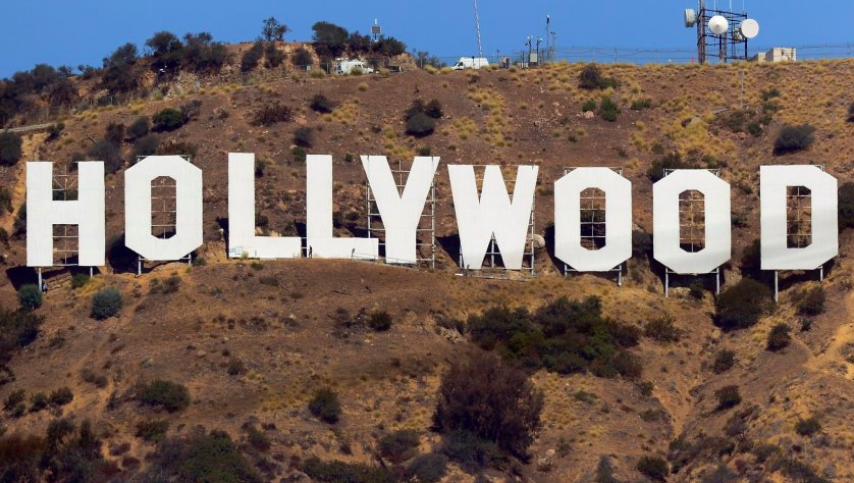
The wood of the holly tree was used by the ancient Druids to make magic wands. One has to wonder whether the entertainment industry has hidden its purpose in plain sight.
Is it mere coincidence that Hollywood shares its name with a tool the ancient Druids used to cast spells? Druids and those who practice Witchcraft believed the holly tree possesses magical powers. The entertainment industry is in the business of creating imaginary worlds that motivate us to consume their creations in mass and made over $11 billion in 2019. The steady stream of heroes and villains continues to be exported to great success around the world and undoubtedly shapes what we perceive as accepted reality.
Does the first Hollywood blockbuster released in 1915, Birth of a Nation, and originally called The Clansman still have a lasting impact on America’s collective racial psyche, through all of its hidden meaning?
When a symbol is successfully associated with specific feelings and intentions, it can have a dramatic and lasting effect on individual motivation and behavior. Many believe it is for this reason the ancients thought this power should be kept secret? A hidden understanding that humanity could potentially destroy itself if it used these powers without the proper spiritual maturity?
Does life imitate art or art imitate life? Advertisers have raised this type of social engineering to a science.
Whether it is a political flag that represents a social ideal, a corporate logo that motivates us to click “purchase” or a spiritual symbol that reflect the most important values in our lives, symbols have a direct effect on our attitudes, behaviors, and life choices – and most often without us even realizing it.
13) Corporate Logos

Brand logos are not a new phenomenon. The Ancient Egyptians, Greeks, Romans, and Chinese all stamped their goods, like bricks, pottery, and bags of herbs, with symbols to indicate who made them. If you’ve been a consumer of a certain brand for a long period of time, you’ve likely fallen prey to a symbol of their devices.
Sure you could eat somewhere else healthier, but you choose McDonalds. The question is why? Maybe because we find those Golden Arches familiar and comforting, an unconscious reminder of an early childhood memory.
Corporate logos are essentially symbols that methodically facilitate their meaning and point-of-view through advertisement. That is, when you see a companies’ logo they are seeking a reaction that is emotionally charged. The reaction could be trusting, thoughtful, happiness, comfort or some other emotional feeling.
Advertisers spend a great deal of time and money shaping their message – to get it right! For when it registers unconsciously, you no longer has to think about, the feeling is automatic!

Back in 1885, when Coca Cola was first introduced as a miracle remedy that contained cocaine, the substance was a common ingredient in patent medicines. So when it was first revealed that cocaine could be extremely harmful, the chemists at Coke did everything they could to remove every trace of it from the beverage. Caffeine was not added until it was produced commercially by Monsanto in 1905, so even though the addictive euphoria had been lifted, the spell still remained. Coca Cola drinkers have been hooked on name and perception for more 150 years with, their world famous logo on a hair trigger.
What kills more people: Cocaine or Sugar?
All too often the headlines coming out Mexico focus on the country’s bloody drugs war. Drug related violence has claimed over 100,000 Mexican lives in the past decade. But it is also worth noting that Type 2 diabetes kills an estimated 70,000 Mexicans per year!
More than 70% of the population is overweight or obese and sugar consumption is the perpetrator. Most of the added sugar in the Mexican diet comes from sugar-sweetened drinks and Coca-Cola is especially popular. Coca Cola holds a special place in Mexico’s national culture and it is not surprising the former president of Mexico, Vicente Fox, was formerly a regional head of the company.
“All my family drinks Coca-Cola,” says Silvia Segura, who lives in a poor neighborhood on the outskirts of Merida, in Mexico’s Yucatan state.
“My mother, may she rest in peace, was a true cocacolera – she couldn’t live without it, she’d drink it three times a day if she could. She said it kept her alive.” When her mother went into hospital for type 2 diabetes, We’d smuggle the coke in and give her some sips,” Silvia says.
Many who have spent their entire careers in marketing never learned the origins of their profession or how it evolved from ‘lesser magic’ practiced by the ancients. To be fair, Coca Cola is not the only corporation marketing sugary drinks. But the success of their iconic symbol is certainly proof of marketing’s spellbinding power.
What has been hidden in plain sight from the average public has been known by secret societies, the Mystery Schools and the Occult for thousands of years.
Lesser magic, also referred to as “everyday” or “situational” magic, is the practice of manipulation by means of applied psychology and has its roots in the Occult. The author of the book the Satanic Bible, Anton Lavey wrote that a key concept in lesser magic is the “command to look”, which can be accomplished by utilizing elements of “sex, sentiment, and wonder”.

In addition to the utilization of looks, body language, scents, color, patterns, and odor, the terms “fascination” and “glamour” have their origins in the world of “coercive” magic. The word “fascination” comes from the Latin word “fascinare”, which means “to cast a spell upon” whereby the practitioner may alter several elements of their physical appearance in order to aid them in seducing or “bewitching” an object of desire.
Does Sex Really Sell?
Those unaware of the power of symbols and their underlying meanings are the most susceptible, completely blind to the hidden hair trigger placed on their subconscious motivations.
These symbols are not just byproducts of our world, they are are designed to influence our attitudes, behaviors, and choices in life – often without us even realizing it. Be clear in your thinking, because both angels and demons hear every thought and every thought is a command. Be careful with them because the mind is very obedient.
12) Egyptian Sun Disk
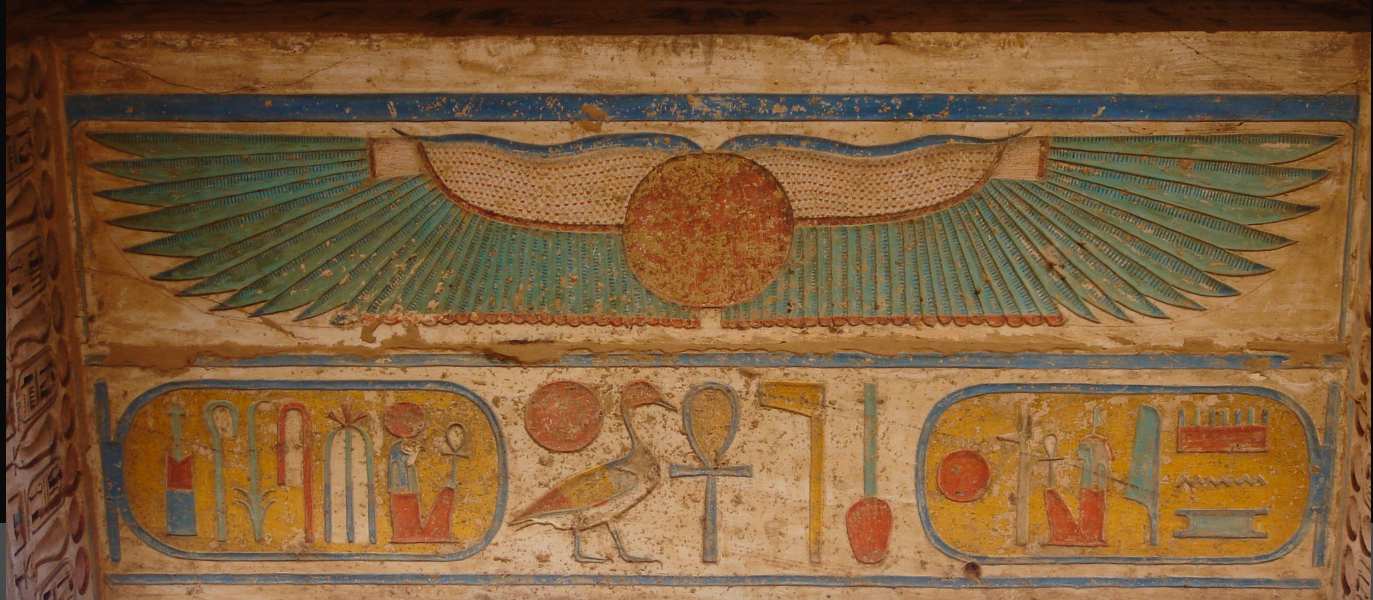
To the ancient Egyptians the Winged Sun Disk symbolized creation and the source of light, and an emblem of rebirth and resurrection. It was worn as a protective talisman by both the living and the deceased to obtain the favors of the gods.
The Egyptian Sun Disk symbol has been lifted to reflect brand identities ad nauseum, the meaning barely investigated and most likely borrowed from another advertiser.
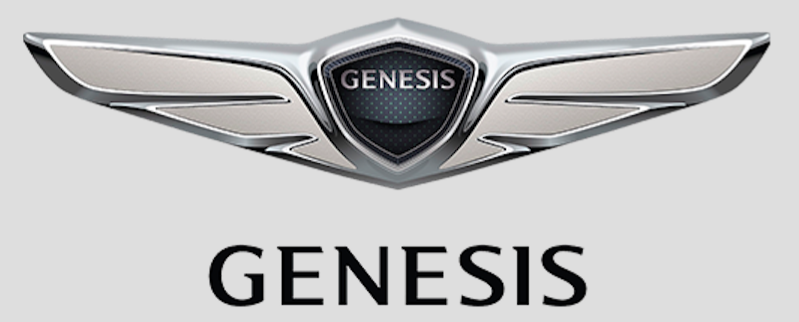



Many of the ancient Egyptian sun-gods were depicted wearing a solar disk crown, reflecting the attributes of their gods, including wisdom, stability, foresight, strength and courage believed to be inherent in the sun disk talisman.
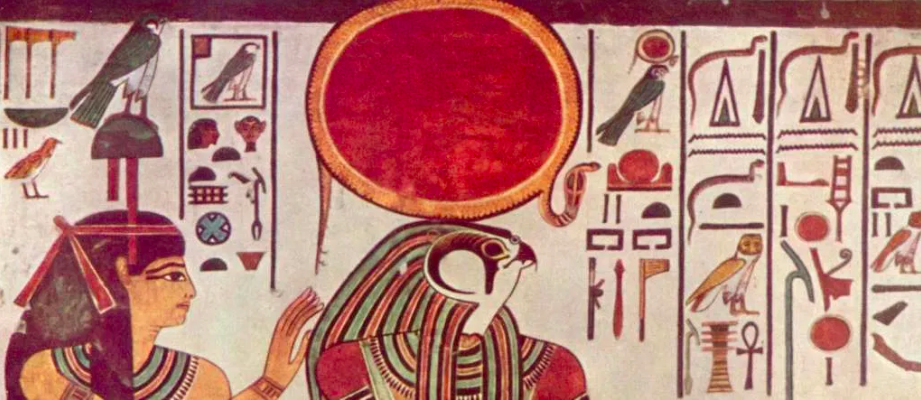
Popular concepts like “freedom,” “society,” “happiness,” and “success” have also been captured and transmitted through iconic symbols. They often refer to abstract concepts and ideals we strive for, but don’t always understand in completely concrete terms.
11) The Heart Symbol

It is one of the first things you learn to draw, or cut out of paper as a child. The heart shape is an ideograph used to express the idea of the “heart” in its metaphorical or symbolic sense as the center of emotion, including affection and love. The ancient and modern philosophers agreed, more or less, that the heart was linked to our strongest emotions, including expressions of love.
Since the 19th century, the symbol has often been used on Valentine’s Day cards, candy boxes, and similar popular culture artifacts as a symbol of romantic love.
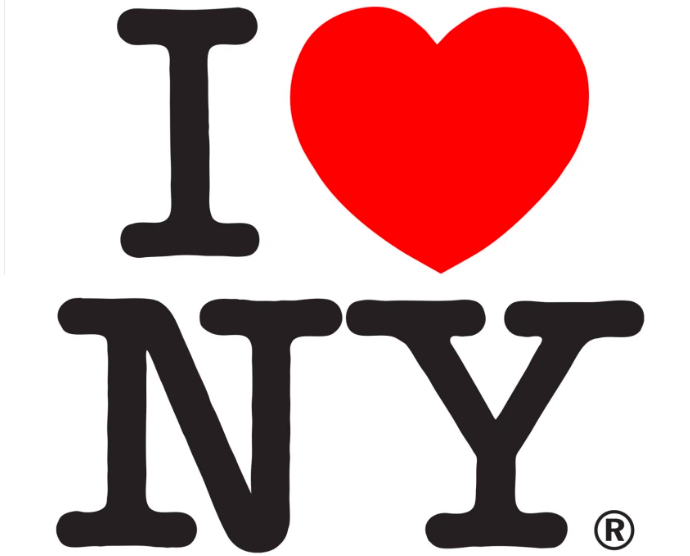
In 1977, the heart icon underwent yet another transformation when it became a verb. The “I ❤ NY” logo was created to boost morale for a city in crisis. Trash piled up on the streets, the crime rate spiked, and it was near bankruptcy.

Hired to design an image that would increase tourism, graphic designer Milton Glaser created the famous logo that extended the heart’s meaning beyond romantic love to embrace the realm of civic feelings.
While the heart may be only a metaphor, it serves us well for love itself is impossible to define.
10) The Peace Sign

In 1958, the modern peace sign was designed by Gerald Holtom in a British campaign that advocated for Nuclear weapons free world. The vertical line in the center represents the flag semaphore signal for the letter D, and the downward lines on either side represent the semaphore signal for the letter N. The “N” and “D” symbolizing nuclear disarmament.
The most enigmatic symbols represent the conception of “God,” which attempts to explain something unexplainable. Every culture has different interpretations of this concept, with some seeing God as a personal entity and others as an impersonal entity representing the forces of nature.
9) Yin & Yang
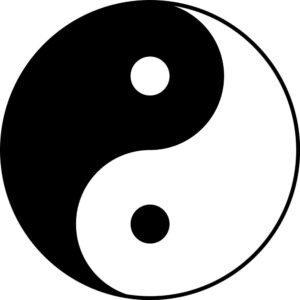
In Ancient Chinese philosophy, yin and yang is a concept of dualism that describes how seemingly opposite may actually be complementary, interconnected, and interdependent, with the universe itself created out of a chaos of material energy.
8) Kahuna – Huna
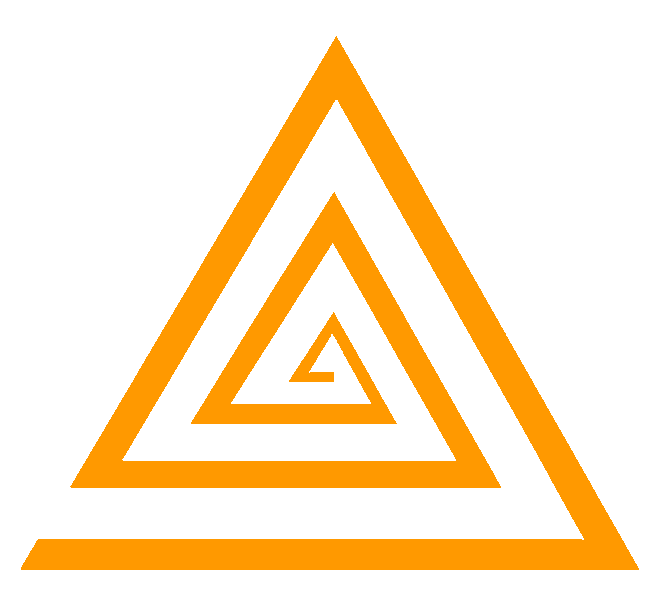
In ancient Hawaii, the Kahuna healed and taught in the spirit and vibration of ‘Aloha’. This vibration of spirit manifesting through love. The purpose behind the ‘Kahuna’ teachings was and is the revelation of truth within each individual.
The teachings and principles of Huna are still taught today, especially with Ka Huna massage being a direct result. You will notice in the wording ’KA Huna’ is similar to ‘Mer KA Ba’ which both are about transcending the body to a higher frequency or light body.
The symbol of KA Huna is similar to that of the Alchemy symbol used in ancient Egyptian and Medieval days as well as now.
SEVEN PRINCIPLES OF HUNA
IKE – The world is what you think it is (BE AWARE)
KALA -There are no limits, everything is possible (BE FREE)
MAKIA -Energy flows where attention goes (BE FOCUSED)
MANAWA -Now is the moment of power (BE PRESENT)
ALOHA -To love is to be happy with (BE HAPPY)
MANA -All power comes from within (BE CONFIDENT)
PONO -Effectiveness is the measure of truth (BE POSITIVE)
7) The Serpent

One of the most common words for “snake or serpent” is Nāga, a symbolic expression found In Hinduism, Buddhism and Jainism and traditionally associated with the tree of life.
Nāgá literally means cobra in ancient Sanskrit and refers to a group of divine or semi-divine half-serpent beings that reside in the underworld and that occasionally take human form. The Khmer of Cambodia believe they are actual descendants of a hybrid union between serpent and man.

The serpent symbol appears in cultures around the world including the ancient Egyptians, Europeans, Chinese and Japanese with their reverence for dragons and Mayan civilization through the Feathered Serpent god, Quetzalcóatl who served as a gateway to the spiritual world. In ancient Sumeria, the term, ‘SIR’, was used to describe the Anunnaki gods, which translates to ‘dragon’ or ‘big serpent’. More on dragons

The caduceus is the symbol of the medical profession that first appeared in the ancient Sumerian god, Ningishzida – the god of vegetation – and was later carried by Hermes in Greek mythology. The center is the mythical wand of the Greek god Hermes who used it to bestow sleep. The twin snakes coiled around the wand symbolize healing and poison, health and illness.

Christianity portrays the serpent as wicked temptation. The evil creature that tricks Eve into giving Adam a bite of the apple from the tree of knowledge. The bite that cast them out of the Garden and Eve that precipitates the downfall of humanity.

6) Nautilus shell
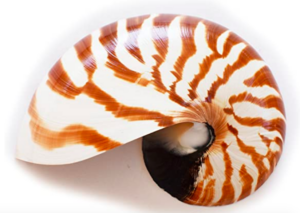
The Nautilus is also a symbol of perfection and beauty and of the best natural examples of a logarithmic spiral that follows the golden ratio. It is also considered a symbol of strength as its shell can withstand very high pressure.
Each chamber of the Nautilus follows the Fibonacci sequence, with the shape of the shell approximating a Phi spiral, which is considered an important aspect of Sacred Geometry.
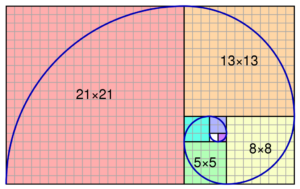
The Nautilus also represents the golden mean: 1.6180339 that reaches into infinity.
5) Infinity
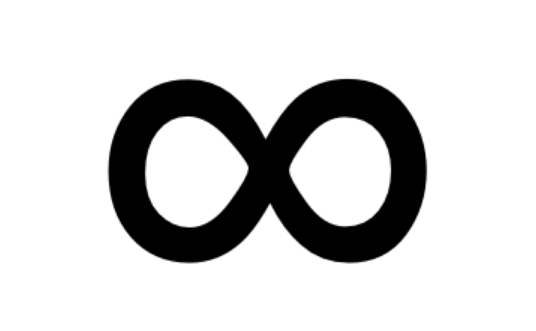
Originating from the Latin infinitas which means “unboundedness”, infinity is the concept of endlessness or limitlessness most widely tackled in the fields of mathematics and physics.
The first Western European known to have written about the concept of infinity was Archimedes, more than 2300 years ago. But the concept is far more ancient, and expressed in the Egyptian symbol of the ouroboros or the intertwined snake.
4) Om

OM is a Sanskrit word and a mystical symbol that appears in Hinduism, Buddhism, and Jainism religions. The sacred Om is composed of three distinct sounds: “a”, “u” and “m” that are believed to have given birth to our physical universe. The number three is important in Hinduism since it teaches that there are three worlds (earth, heaven, and the atmosphere), three major gods (Brahma, Vishnu, and Shiva), and three Vedic scriptures: Rg, Yajur, and Sama and perhaps the sound
The OM incantation is chanted in meditation and at the start or the end of a reading, mantra or prayer and it is the sound that many believe gave birth to life and the Universe. It also might also be seeded in the Christian religious text.
John 1:1:
“In the beginning was the Word, and the Word was with God, and the Word was God.”
When the Om sound is sung perfectly, the Cymatic pattern that emerges is called the Sri Yantra.
3) Sri Yantra

This symbol is composed of nine interlocking triangles that radiate outwards from the center or bind point. This central point is considered the meeting place or junction between the physical world and the spiritual world, and a source of manifestation. .
The word ‘yantra’ means ‘instrument’ and this is exactly what this symbol represents: a powerful tool for intense meditation, prayer or concentration that allows one to achieve a higher level of consciousness. The Sri Yantra acts as a focusing point, with an inner and outer doorway that can lead one to commune with different deities through various levels or force centers in the universe.
2) Alpha and Omega
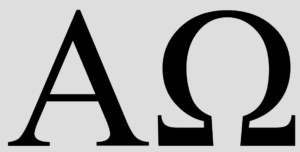
Alpha (Α) and Omega (Ω) represent the first and last letters of the Greek alphabet. They are a Christian symbol that also represents God as used in the Book of Revelation in the Bible. The phrase Alpha and Omega is derived from the one that quotes God as being the Alpha and the Omega in Revelation 1:8, 21:6, and 22:13, and is clarified two times with the extra title “the beginning and the end”.
1) Pentagram

The Pentagram symbol, composed of five, straight lines that form a star, harks back to 3000 BC in Mesopotamia, where Sumerian pentagrams were said to connote the word “UB,” meaning “corner” or “angle.” The mystical meaning of the pentagram surfaced in Babylonian times, wherein the five points of the shape was said to refer to the planets Jupiter, Mercury, Mars, Saturn, and Venus.
Through the centuries, this five-pointed star has been used by several religions: the Hebrews used the symbol to represent the Truth and the five books of the Pentateuch; the Druids referred to the pentagram as the Godhead and the Christians said that the five points represented Christ’s five wounds.
It is the inverted pentagram – with the two points projecting upwards – that is a symbol of evil. The symbol attracts sinister forces because it represents the overturning of the proper order of things and demonstrates the triumph of matter over spirit.
We live in a literal “matrix” that has been superimposed into our subconscious through the language of symbols.
It is important to be clear in your thinking, as angels and demons hear every thought, and every thought is a command. The mind is a faithful servant. When I was a child my mother would say, ‘don’t claim that!’ and now I know exactly what she meant. Don’t think and speak things into being. Thoughts combined with emotion becomes highly charged impression. Dismiss thoughts that are not in keeping with your emotional and physical well-being.
Let them pass and do not claim them. Most, importantly do not let them cling to your emotional feelings. Tears of joy are just as powerful as tears of sorrow.
